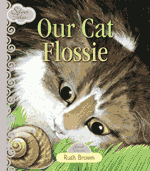Secure Checkout. FREE SHIPPING for Continental U.S. Orders over $60.
Menu
-
- Home
-
About Us
-
The Approach
-
Linking Language & Literacy
-
Professional Learning
-
Learning Resources
-
SHOP
-
Blog
-
- About MindWing
- Our People
- Contact Us
- Your Account
- Login
-
United States (USD $)

Secure Checkout. FREE SHIPPING for Continental U.S. Orders over $60.
Technology Tuesday: Vocabulary, Summer Programming, and Story Grammar Marker®!
June 09, 2015 2 Comments
 Some years ago as an SLP in the elementary school setting, I was informed by a colleague of Isabel Beck’s revolutionary approach to targeting vocabulary. In the book Bringing Words to Life: Robust Vocabulary Development, co-written with Margaret McKeown and Linda Kucan, the authors describe a methodology for building vocabulary revolving around key principles...
Some years ago as an SLP in the elementary school setting, I was informed by a colleague of Isabel Beck’s revolutionary approach to targeting vocabulary. In the book Bringing Words to Life: Robust Vocabulary Development, co-written with Margaret McKeown and Linda Kucan, the authors describe a methodology for building vocabulary revolving around key principles...

The Trumpet of The Swan
May 26, 2015

Ronald Morgan Goes to Bat
May 18, 2015

Story Grammar and the Classroom Curriculum: The Five Senses
May 16, 2015
Over the years I have developed a special interest in collecting and using picture books that are tangential to the classroom curriculum. It’s wonderful to find books that contain touches of our content areas but aren’t “in your face” about it! These books can engage students in a story (and thus help them develop narrative language) while also providing a context to access abstract curriculum areas.
Although many schools cover this topic at different times of year, Spring is a great time for a science unit on the five senses. For younger students, this is a basic overview on how we experience the world though hearing, sight, smell, taste and touch. For older students, these simpler concepts can serve as an entry point to the more difficult intricacies of how the sensory system works. Additionally, May is Better Hearing and Speech Month in the USA and May Month in Canada, so what better time to talk about the sense of hearing, and maybe sync with some lessons about hearing and speech?...
Getting the “Story” of a Situation
May 12, 2015
In working with SLPs, teachers, other professionals and graduate students around the myriad ways I find Story Grammar Marker® useful in intervention, I often emphasize how narrative is at the crux of language functioning and social cognition. This post will explore this idea with an eye toward the concept of situational awareness, an area we can look at as critical for many of our students with social learning challenges--an appropriate topic for May as it is Better Speech and Hearing Month!
In their article, Social Learning and Social Functioning: Social Thinking's Cascade of Social Functioning, Michelle Garcia Winner and Pamela Crooke describe how awareness of situations serves as the foundation of interactions. Social functioning can then be considered a "cascade" of additional skills such as self-awareness within a situation (and understanding of one's own possible role in the ongoing situation) and abstracting and interpreting the ongoing language and actions of others.
Our Cat Flossie
May 01, 2015
Read the book to the students. Review the character map and the categories with the children. Reread Flossie to the children having them listen to details to use on the Character Map. Pair the children and give them the Character Map to complete. Have them write the character’s name under the character icon.
With the students participating, complete the Character Map with the class showing the pictures and/or reading the text that relate to the each section of the map. This book lends itself very well to this activity as the text is simple and illustrations are wonderful. We have used this activity with students in K-3, modified according to the needs of the grade level.
Below are two samples from second grade students.

